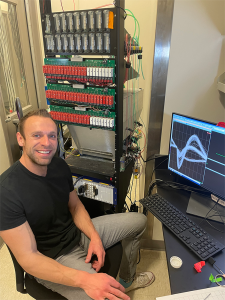 Hot Off the Press – December 22, 2022
Hot Off the Press – December 22, 2022
Summary
Neurons communicate via electrical signals – spikes – and recording these has provided fundamental information regarding how the brain works. When neurons send electrical signals, several other biological signals occur, notably calcium. Calcium signaling is often used to make inferences about spike activity. However, it was unknown how closely calcium signaling hews to known spike correlates during a complex cognitive operation, such as learning. Hart and colleagues used olfactory discrimination learning in rats, spike recording, and calcium imaging to address this question. Spike data replicated findings from previous olfactory discrimination learning tasks; spikes represented both specific and general components of the task. Calcium activity provided a degraded estimate of the information contained in spikes, representing the task only in broad-strokes. These findings demonstrate that using calcium activity as a proxy for spikes during complex cognitive operations results in the loss of information conveyed by subtle changes in spike activity.
Publication Information
Calcium activity is a degraded estimate of spikes Journal Article
In: Curr Biol, vol. 32, no. 24, pp. 5364–5373.e4, 2022, ISSN: 1879-0445.
